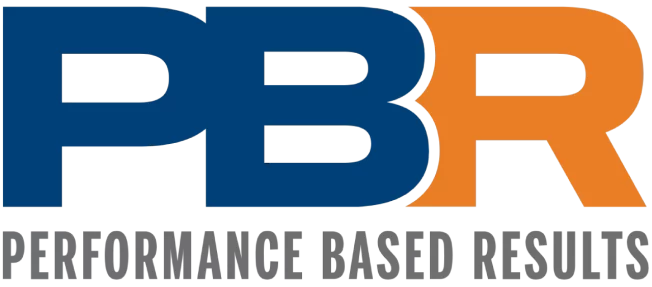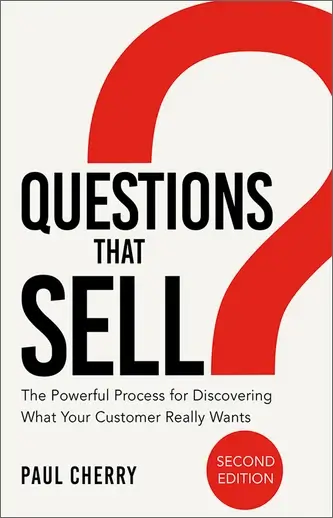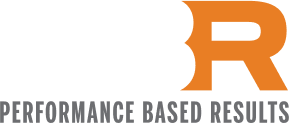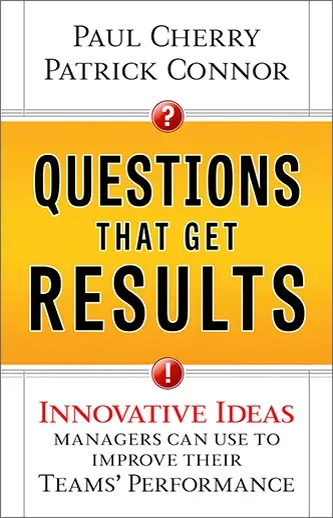Rick Farrell’s article “Pain Locator Questions” is on target in his fine examples of how to build rapport with questioning skills. I think you’ll like it as much as I did.
Pain Locator Questions
Since for all intents and purposes prospects could care less about you and your company, the pain locator questions are a great way to put all the emphasis and focus on prospects. These questions are an excellent tool to use to build rapport; create a long-term relationship built on trust and confidence; build a business case instead of just a product justification — and save time, energy and resources by quickly identifying your prospect’s problems, consequences, commitments, priorities and motivations to change.
The depth of these questions underscores the tenet that there are many ways to skin a cat. I have listed, obviously more than necessary, the questions you may use to gain insight and understanding of your prospects’ problems and pains. Generally 5-10 questions will suffice. When I have my clients in my training sessions list out all their own diagnostic questions, they can usually go no deeper than two questions, if that! The process of asking these in-depth questions is essentially alien to them. The beauty of these questions is that it forces you to do all the things that make a great salesperson: empathize, listen, demonstrate care and expertise, and most importantly, exude trust.
These questions are to follow when a prospect states a problem or a concern in their business. Your job as a salesperson is to understand the full extent of your prospect’s problems and help them understand if the timing is right for them to act on it.
To make it a little easier to understand the flow and strategy of these questions, I’ve loosely categorize them into three areas:
- Big picture and defining the problem.
- Consequences and implications.
- Next step, commitment and options.
1. Big Picture and Defining the Problem
- “Tell me more about the problem.”
- “How long has it been a problem?”
- “Who else knows about the problem?”
- “How long have your been thinking about this problem?”
- “How is it impacting the organization?”
- “How is it impacting you personally?”
- “What is your stake or vested interest in fixing the problem?”
- “How much is the problem costing you in time, resources, personnel, dollars and energy?”
- “How much longer can you afford to have the problem go unresolved?”
- “In relation to this problem or situation, how are you evaluated?”
- “When you went to your existing suppliers and shared your frustrations about this problem, what reassurances did they give you that it wouldn’t be repeated?”
- “What are some of the original causes of the problem?”
- “When you are saying it is a problem, what standard are you using to measure it against?”
- “Why do you think the problem has been going on for so long?”
- “When do you need the problem fixed by?”
- “Is the timing right for you to stick your neck out and champion this cause?”
- “What could you have done to avoid this problem?”
- “What kind of return or payoff will you be looking for if you get a successful resolution of the problem?”
- “How is your job performance measured in relation to this issue?”
- “What evidence do you have that this is a problem? Is it quantifiable or soft evidence?”
- “What do you have riding on this if it is successful or unsuccessful?”
- “Is it important to get quantifiable evidence to justify a change?”
- “How often do you think the problem has come up where you weren’t even aware of it?”
- “Who is ultimately responsible for this?”
- “How acceptable or unacceptable is this problem?”
- “Beyond job satisfactions and pride in doing a job well, what, if anything, do you have riding on this problem? Is that enough to carry the day?”
- “Tell me more about it.”
- “Can you make an educated guess as to how much it costs you?”
- “Why have you been dealing with this for so long?”
- “Why do you think it is happening? Who is responsible?”
- “What’s your role in this problem?”
- “When you told your people in your department that this is unacceptable, what did they say?”
- “What bothers you the most about this problem?”
- “How can you cost-justify fixing this?”
- “What has prevented you from fixing this?”
- “In the meantime, what are you doing to compensate for this problem?”
- “Prior to our meeting, this was a latent back burner issue. Now we’re looking at it to determine if it will be a front burner issue. How are you going to rectify this?”
- “Does this affect other parts of the business?”
- “How are your going to break the news to your department that this is no longer acceptable?”
- “What has prevented you from fixing this in the past?”
- “What kind of timeframe are you working in to fix this?”
- “I’m hearing it is a company problem or industry problem, but I’m not hearing it as your problem.”
- “What is management’s contribution to this problem?”
- “How long have you been thinking about it?”
- “Who else is aware of it?”
- “What is it costing you?”
- “What is your strategy to fix this problem?”
- “Who supports this action?”
- “Specifically, what success criteria will you be looking for beyond an increase in revenue? How big of a measurable change will you be looking for in your business? Will you have the time to drive this and monitor it?”
- “Is this problem causing other problems?”
- “What practical options do you have to address this?”
- “What are the key performance indicators for your business to run profitably, and how is this impacted by the problem?”
- “What kind of pressure is this causing you and the business?”
- “Does your competition have these problems?”
- “When you compete, how do these problems manifest themselves?”
- “Have you told your customer the problem will be fixed? Have you told your General Manager that the problem won’t continue?”
- “Who will ultimately have responsibility for the successful resolution of this problem?”
2. Consequences and Implications
- “You are a successful company. How did you get yourself in this mess?” (a personal favorite of mine)
- “What issues must be addressed first in order to seriously consider changing or fixing this problem?”
- “What political issues must be addressed before you decide to change?”
- “What is it about your company’s culture that allows this problem to persist unimpeded?”
- “What is your greatest fear about addressing this problem?” (Get the worst-case scenario and/or the best-case scenario.)
- “If this problem is solved, does it free up your time to pursue other priorities or initiatives?”
- “Are there any competing initiatives or projects that could take precedence over this?”
- “Have you exhausted all options in trying to fix this yourself?”
- “You succeeded in the past without this, what makes you believe you need it now?”
- “What could you have done to avoid this?”
- “If they haven’t been able to fix your problem, what makes you believe someone else can have better luck?”
- “Have you made the decision that you have to do something with somebody to address this issue?”
- “Realistically, when is the most practical time to deal with this?”
- “Is this the right time to stick your neck out and do something different?”
- “Compounded by the number of incidents where the problem resurfaces, multiplied by the number of salespeople you have, adding the cumulative effect of time span of the problem, what are the costs?”
- “What else is going on with your company that could possibly take precedence over this?”
- “Is there a sense of urgency to fix it or do you have plenty of breathing room?”
- “If it continues at this rate or pace and goes unchecked, at what point do you decide it has to change?”
- “If we hadn’t had the opportunity to meet, what would you have done to address this problem?”
3. Next step, commitment and options
- “What hurdles or risks do you see in moving forward to fix this problem?”
- “From your perspective, what is the next step for you?”
- “With or without us, have you made a final decision that you must fix the problem?”
- “I’m wondering if you get some measure of security by letting this problem go unchecked?”
- “How will you know who has the best solution for you?”
- “It seems like you are invested in keeping things the way they are?”
- “How would you know that a solution was successful? Where would it show up?”
- “What performance indicators will increase or decrease if we are successful?”
- “How will you measure success?”
- “What kind of payoff will you be looking for?”
- “What’s the value of this problem over time?”
- “So far, what conclusions have you reached about fixing this problem?”
- “How do you see us helping you, and why us as opposed to someone else?”
- “Let’s imagine the problem is fixed. What would it look like and how would you know?”
- “How confident are you that this will work?”
- “From a timing perspective, what makes this a particularly attractive or unattractive time to address this?”
- “What is the date by which you hope to get the results in place?”
- “What has to be in place for this deal to go down smoothly?”
- “Assuming you make a change, what concerns would you have about the implementation step?”
- “If you could design the perfect solution, what would it look like, how much would you spend and how long would it go for?”
- “For all the good you are trying to achieve, do you see any unavoidable negative consequences?”
- “What sense of urgency do you have here?”
- “What else should I know?”
- “Have you decided yet that this is the best approach to address this issue?”
- “If you did nothing, what would happen?”
The key with these pain locator questions is to take a non-selling posture and allow the prospect to self-discover their own issues and problems and grant them the freedom to come to their own conclusions regardless of your selling agenda. These questions are effective because they demonstrate very little self-interest and put all the focus and attention on the prospect and the truth.
About the Author:
Rick P. Farrell is President of Tangent Knowledge Systems.






